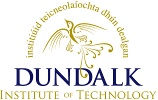Oliveira Antunes, Patrícia (2021) An investigation of the impacts of unrestricted cattle access to watercourses on freshwater physicochemical and microbial parameters. Doctoral thesis, Dundalk Institute of Technology.
|
PDF
- Published Version
Download (7MB) |
Abstract
Where pastoral agriculture dominates, the practice of allowing livestock access to farmland watercourses as a cheap and low maintenance source of drinking water has been shown to have an adverse impact on water quality. In Ireland, agriculture, which is predominantly cattle-based, has been linked to the downward trend in water quality observed in recent decades, which conflicts with the goals of the Water Framework Directive. However, the research investigating the potential impacts of cattle access to watercourses on freshwater systems has predominantly been conducted in the USA and Australasia. In these regions, climate and farming practices typically contrast with those observed in Ireland and in Europe, thus making comparison difficult. This study aimed at contributing to an understanding of the impacts of cattle access to watercourses on freshwater systems in the Irish setting. Specifically, the current study investigated the impacts of cattle access to streams on freshwater abiotic parameters (i.e. nutrients, sediment) and on freshwater faecal contamination. It also addressed the efficacy of streamside fencing as a mitigation measure for such impacts. The findings of this study showed that faecal contamination in watercourses draining agricultural areas in Ireland is widespread. Escherichia coli (E. coli) concentrations in the streambed sediment compartment were in the order of 103 to 104 CFU g dry wt-1 at stream reaches with no cattle access, during grazing season. However, at stream reaches with unrestricted cattle access, E. coli sediment concentrations were significantly higher, with maximum average concentrations of 1.6 x 107 CFU g dry wt-1 in mid-grazing season. Sediment E. coli concentrations were found to decrease but persist in post-grazing season, with concentrations at upstream reaches of up to 103 CFU g and up to 105 CFU g dry wt-1 at cattle access sites. Furthermore, the study found a significant negative correlation between the Riparian Habitat Index scores of the sites, which reflect the intensity of cattle access impact (and whereby a lower score indicates higher site degradation) and E. coli sediment concentrations in mid-grazing season. Nutrient (TP, TN and OC) reservoirs in sediments at cattle access sites were assessed. Results here indicate that cattle access to watercourses does not generally result in localised nutrient accumulation in streambed sediments. However, this study found a significant positive relationship between cattle density at the access sites and all three nutrient concentrations in the silt and clay fraction of the sediments. The results suggest that while cattle access may contribute to sediment nutrient reservoirs, rapid flushing downstream of nutrients at access sites may occur. Additionally, results suggest that sediment nutrient concentrations in agricultural streams are mainly driven by diffuse pollution at the catchment scale. Potential changes in water quality parameters during cattle in-stream activity were assessed in a near-real time experiment which showed that cattle access led to significant increases in water loads of E. coli bacteria, TSS and NH4-N. While increases were observed in TP loads, these were not significant in the context of the natural variation at the experimental site. NO3-N and SRP did not show significant variation in response to cattle in-stream activity. A short study on the effects of streamside fencing showed a positive effect in streambed sediment concentrations of E. coli and nutrients. However, this study also highlighted the need of adopting a site-specific, holistic approach that combines cattle exclusion measures with other measures to control diffuse pollution if cattle-based agriculture pressures are to be successfully managed. The current research has thus demonstrated that cattle access to watercourses contributes to both faecal and nutrient contamination of freshwaters, and that while microbial pollution is mainly governed by field-scale management, nutrient pollution is driven by catchment-scale practices. Results presented here support the implementation of fencing to exclude cattle from watercourses; however, this needs to be considered as part of wider, integrated catchment management plans. The study contributes to the literature describing agricultural pressures in headwater streams and provides relevant information for stakeholders and policy makers.
| Item Type: | Thesis (Doctoral) |
|---|---|
| Subjects: | Science > Biology Science > Chemistry |
| Research Centres: | UNSPECIFIED |
| Depositing User: | Eleanor Jennings |
| Date Deposited: | 17 Nov 2021 12:43 |
| Last Modified: | 17 Nov 2021 12:43 |
| License: | Creative Commons: Attribution-Noncommercial-Share Alike 4.0 |
| URI: | https://eprints.dkit.ie/id/eprint/768 |
Actions (login required)
 |
View Item |
Downloads
Downloads per month over past year

